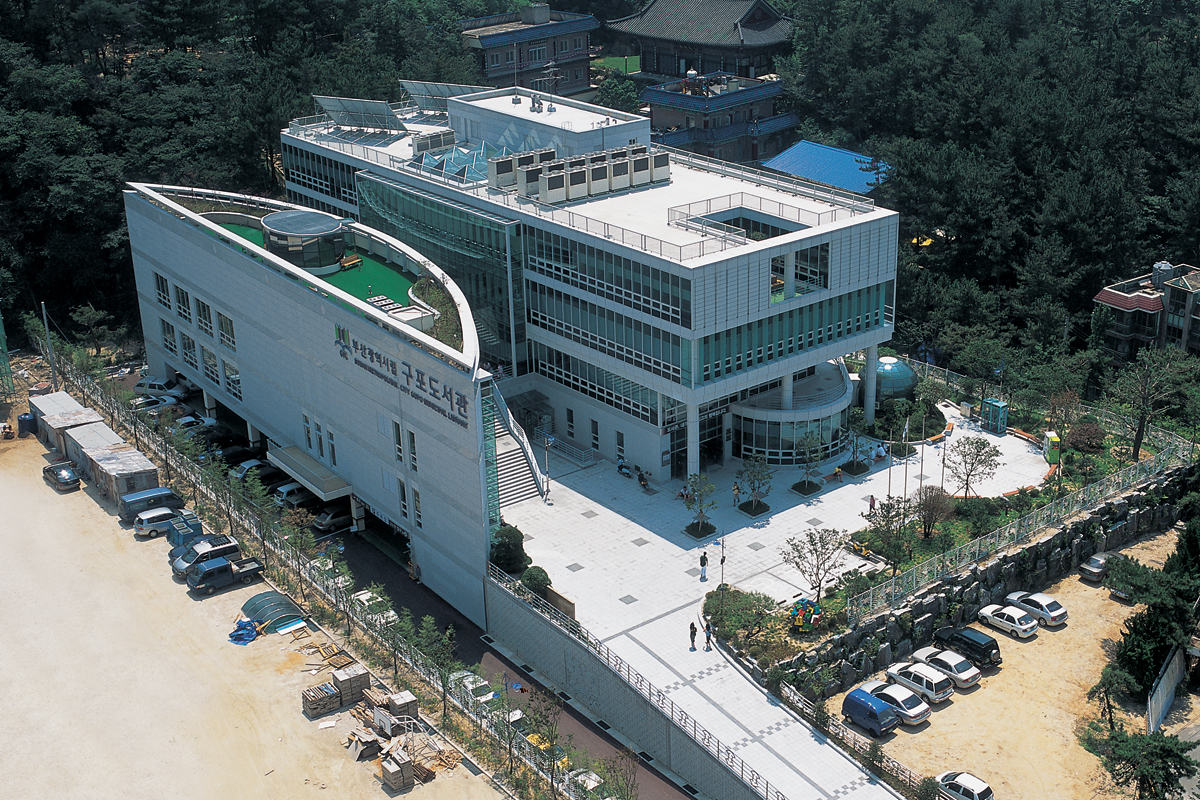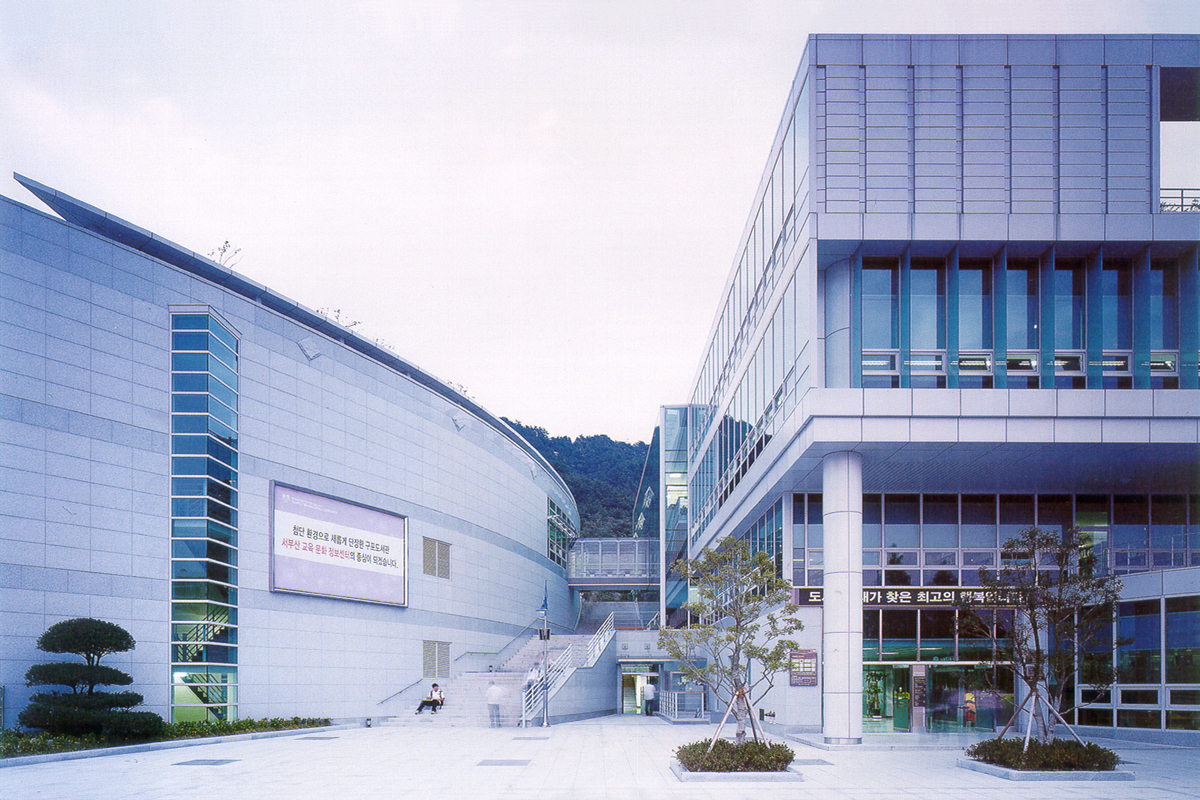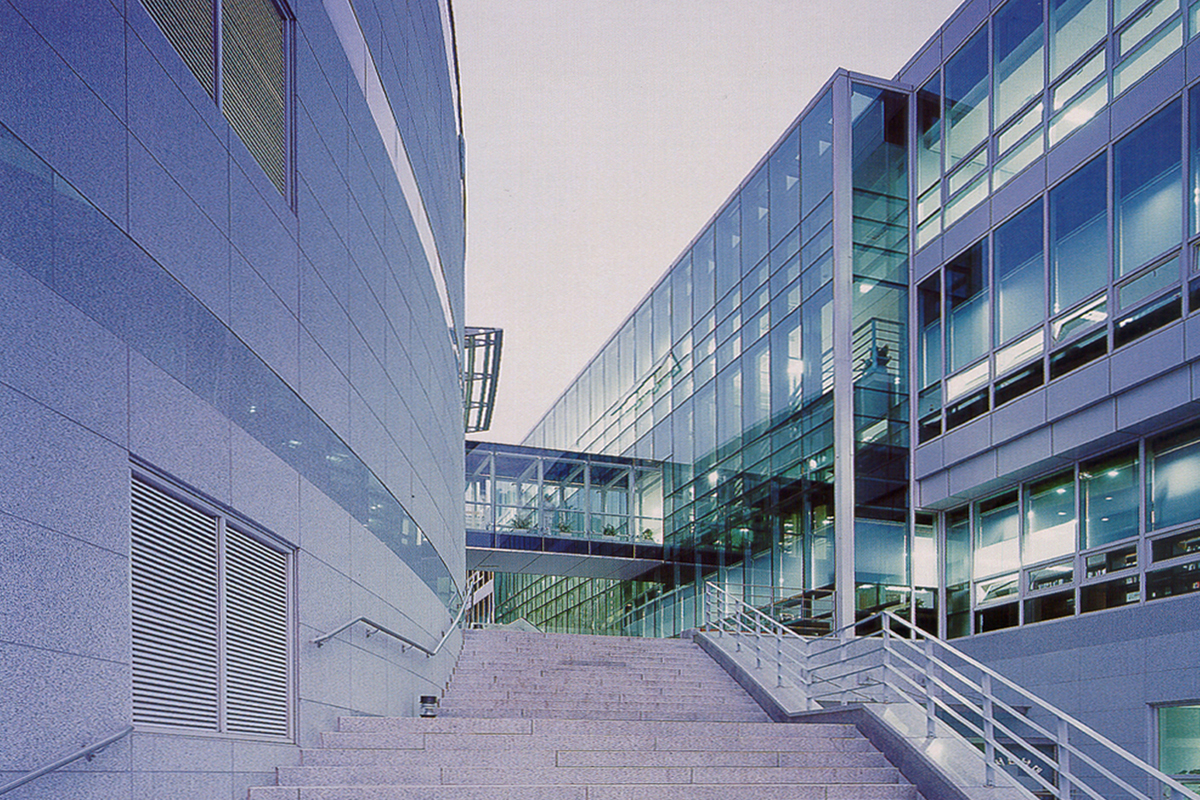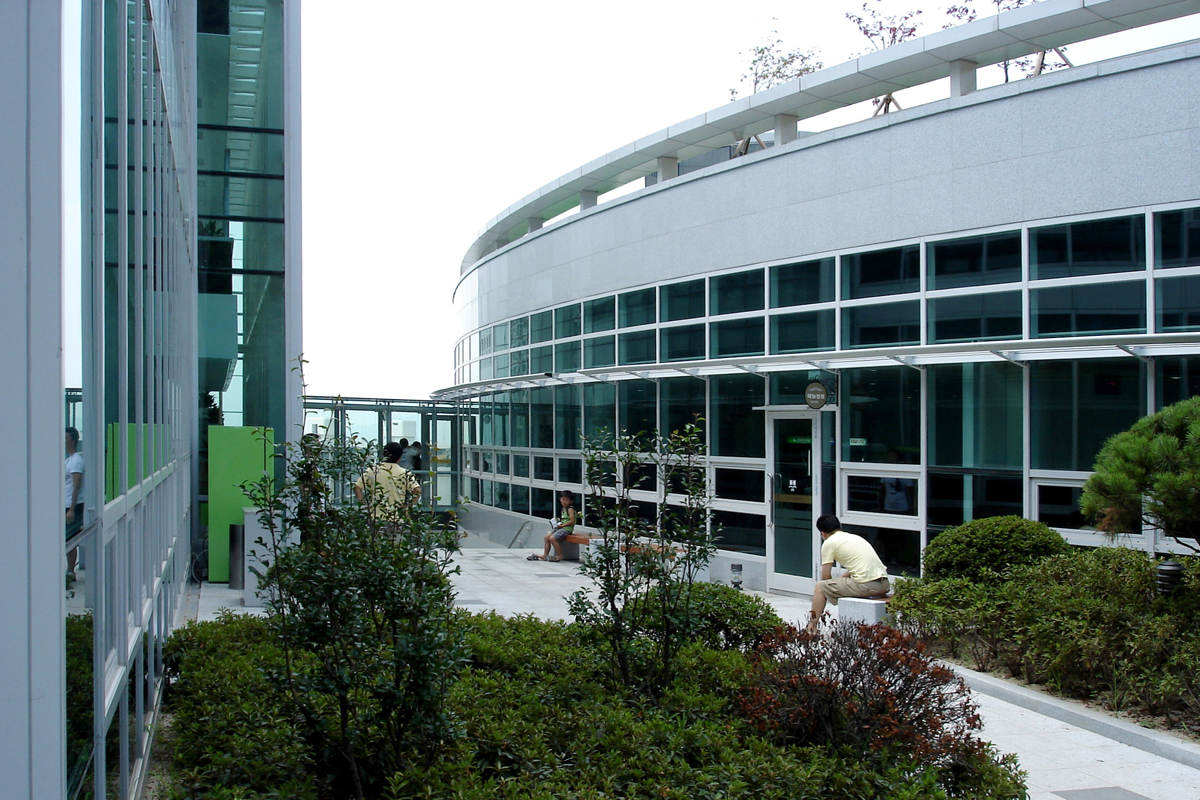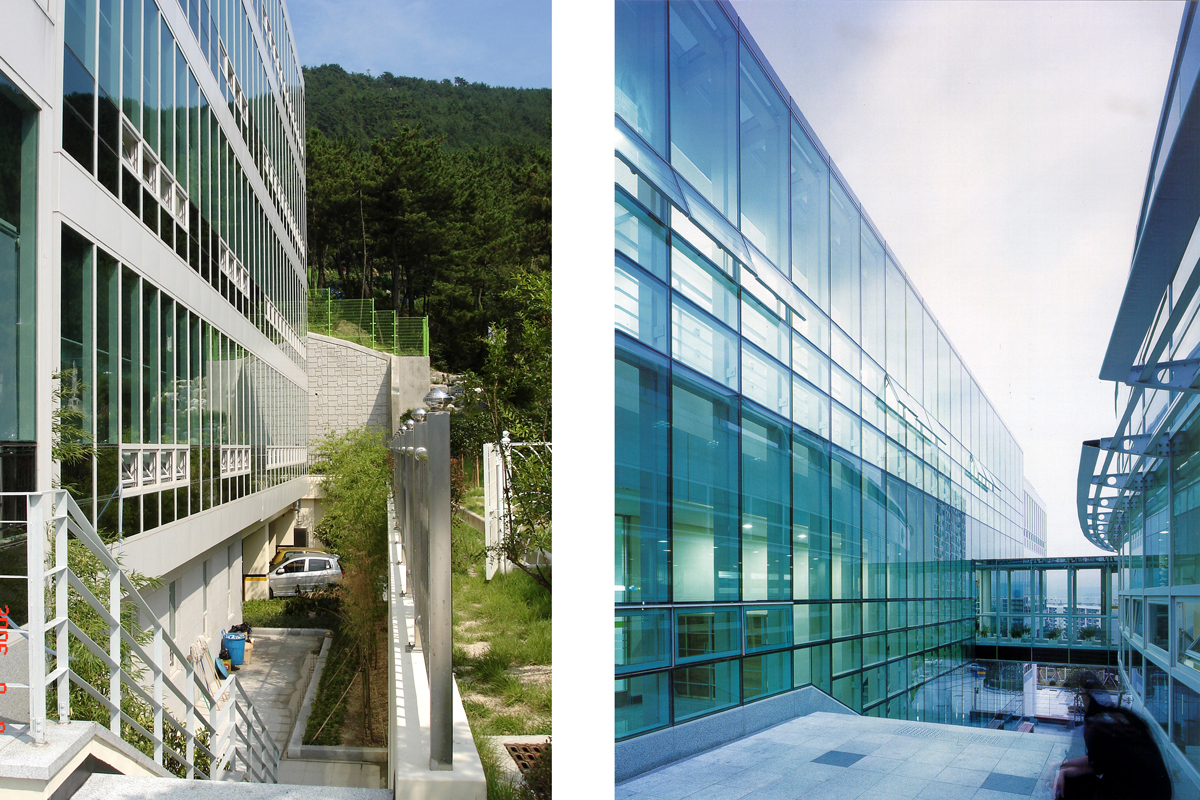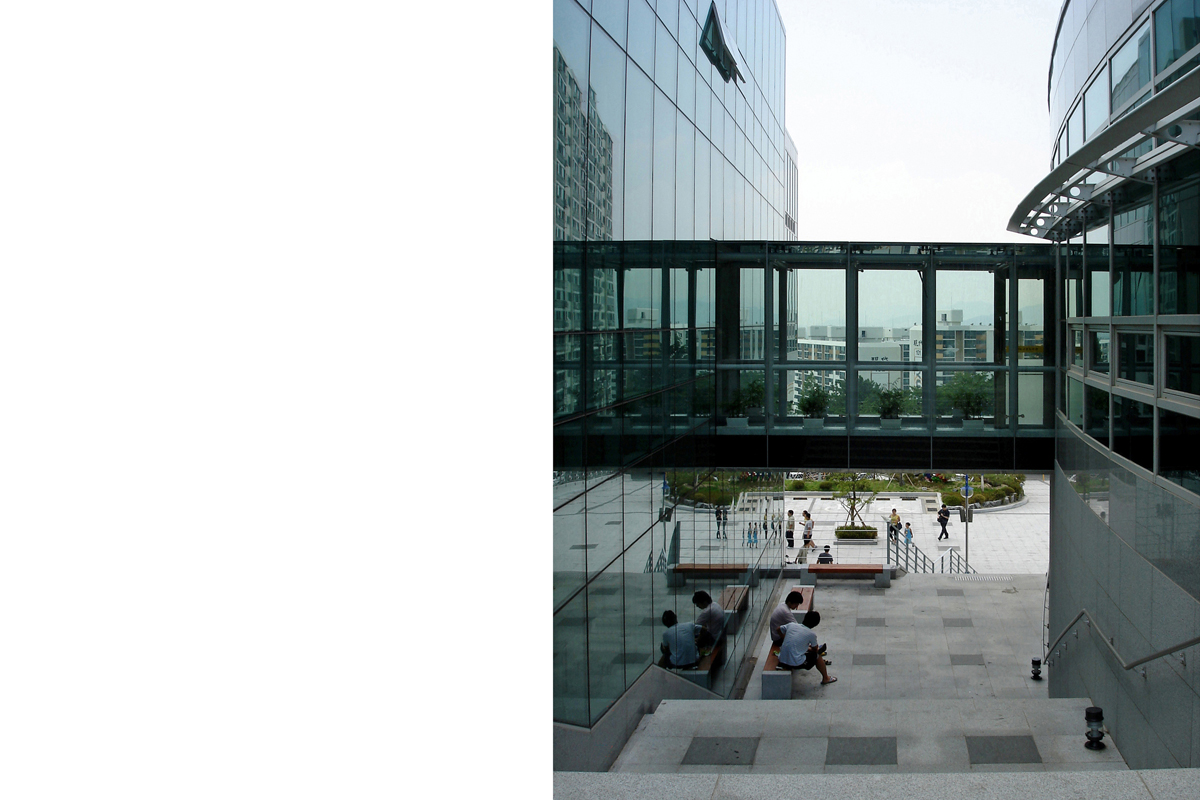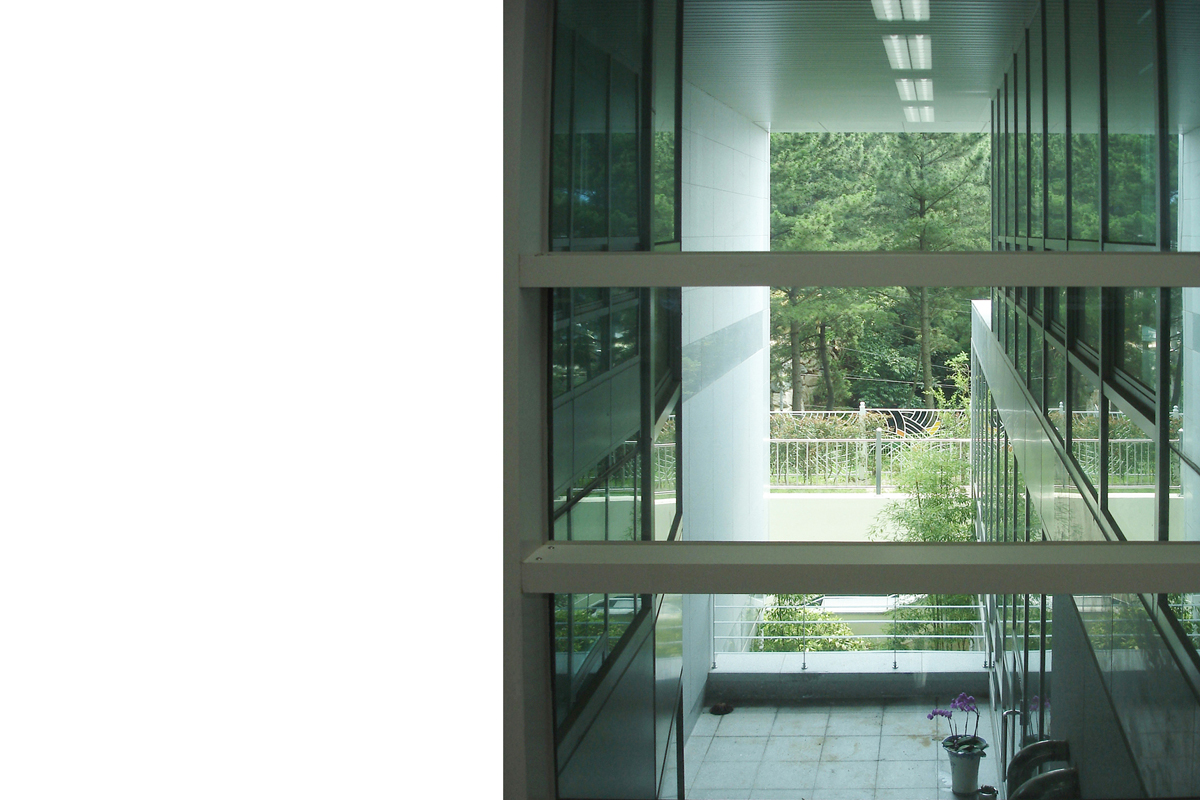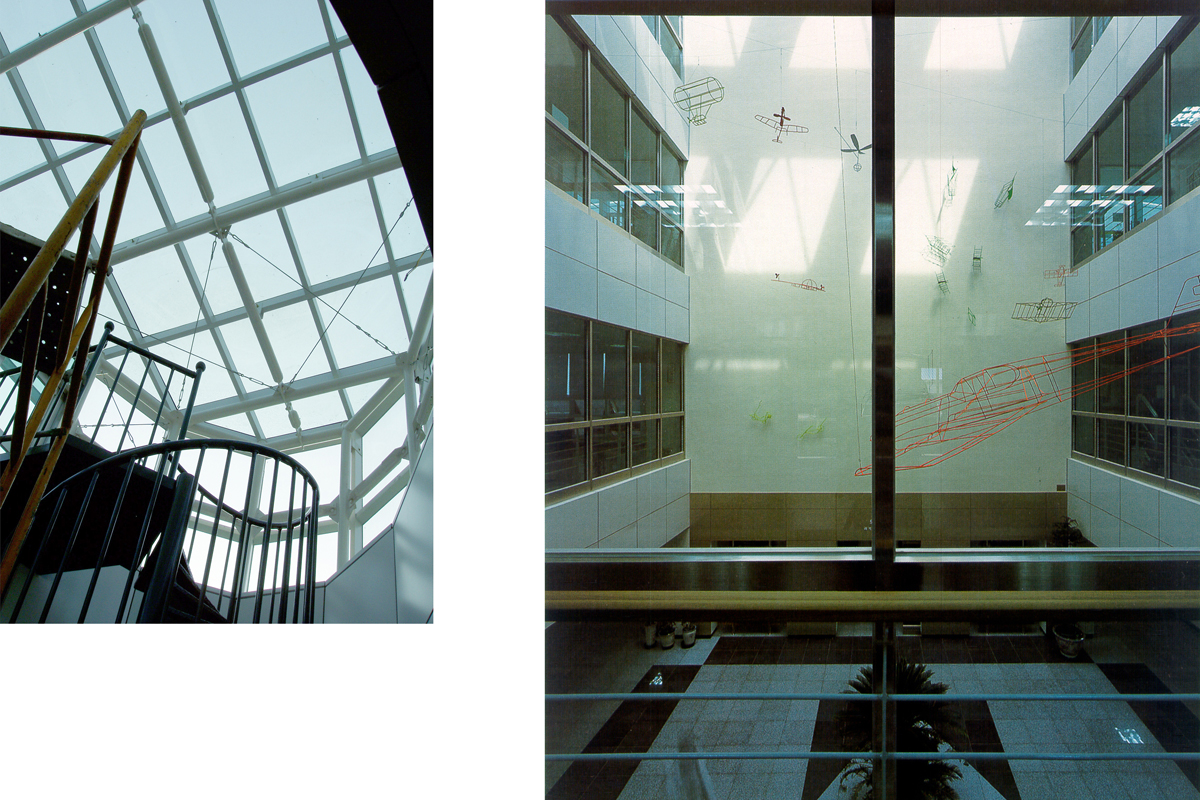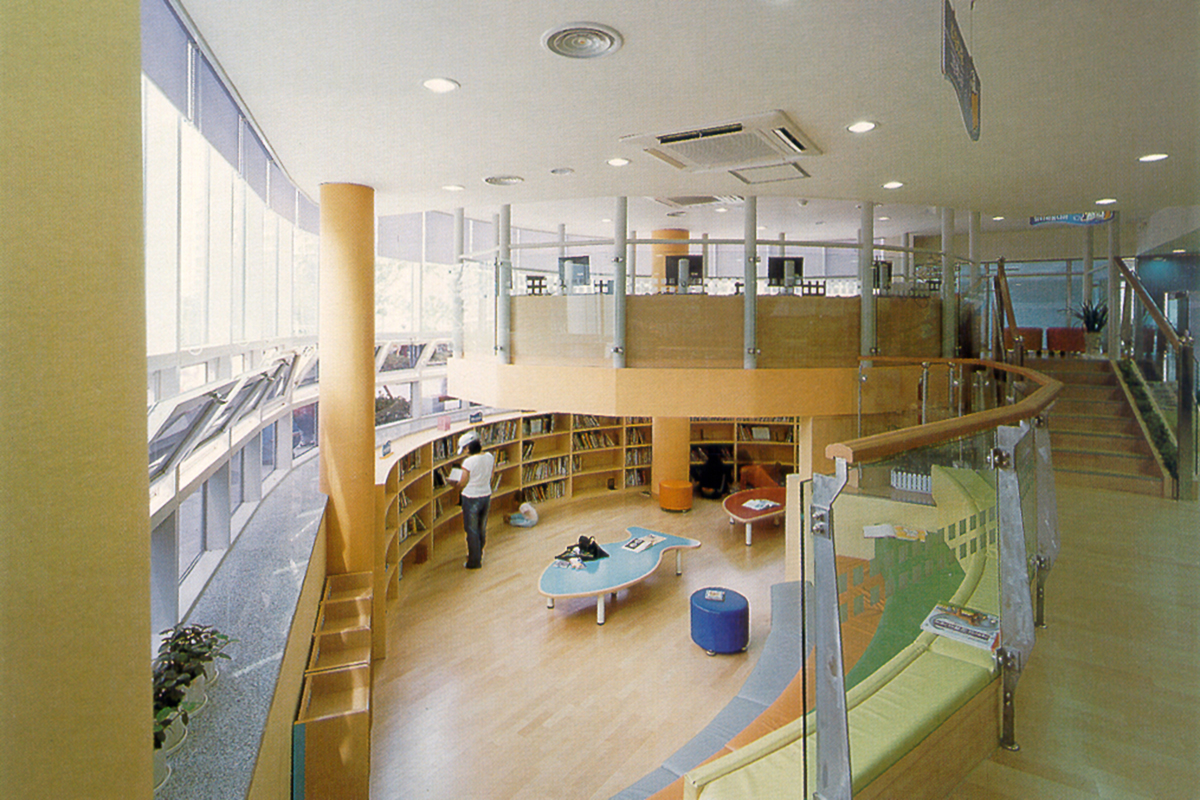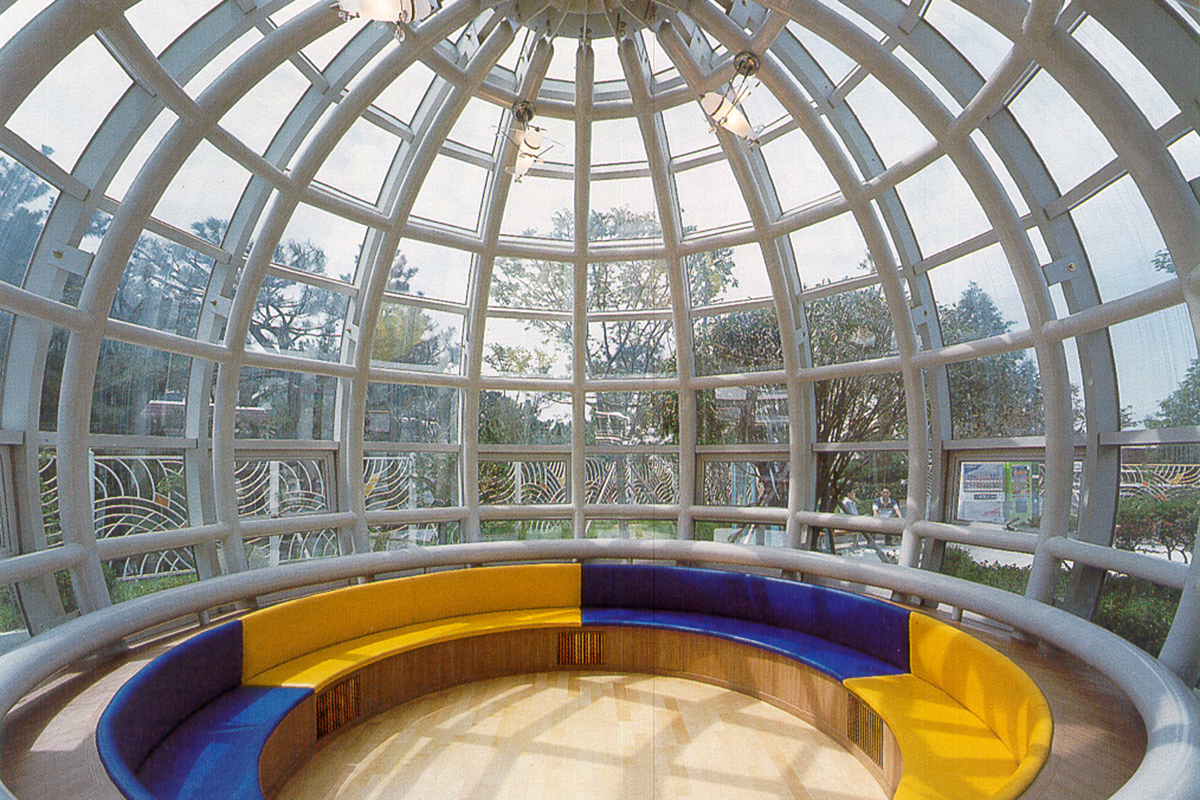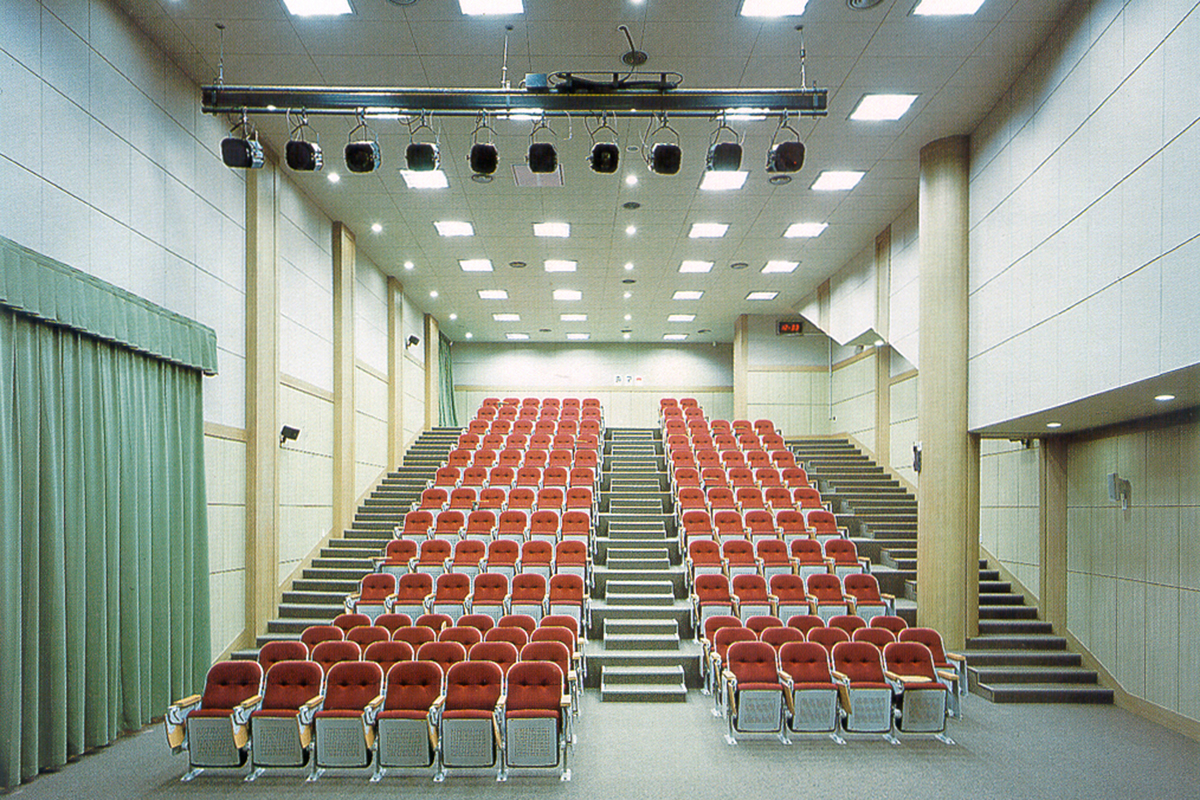구포도서관
Gupo Library 2006
- Location: Busan
- Area: 7,482㎡
- 1 Story Below Ground,
- 4 Stories Above Ground
- Structure: Reinforced Concrete
Distinction among public cultural facilities in terms of their roles and operations is becoming increasingly ambiguous these days. Remarkable technological development has made it possible to exchange information without limitation of time and space. One thumb-nail size memory chip, nowadays, can store several hundreds of volumes of books and information on art, images, music, paintings.
Traditional functions of a library such as collection, classification, preservation and public reading of the books, calligraphies, and paintings have been changed because of the revolutionary change in management and conveyance system of information. Roles of a library of these days are also expanded to include functions as a nodal point of local culture that supports a life-time education of all generations from children to elderly.
The Gupo Library Project reflects such socio-cultural changes: Obsolete and inappropriate facilities are renewed and expanded to function as a cultural node for the community of the western district of Busan, especially as a special library for children.
The site is located on the west slope of Baeg-Yang San Mountain in Bug-gu, Busan, within a 5-minute walking distance from Gu-Nam Subway Station. South and east of the east-west long site are converged to the foot of the Bag-Yang San Mountain, a rest area for the residents. On the downhill at the west of the site, a scenic view is wide open toward the far away Nack-dong-gang River. North of the site is adjacent to the playground of the Gupo Middle School. The lane extended toward the Bag-Yang San Mountain through the middle of the site is favored walk-lane of the neighbors.
The design intended to create a nature-friendly healthy environment in harmony with the socio-cultural and natural context of the site. Layout of the building adapts to the existing land formation with minimum change in natural formation. The library is divided into two building blocks, or two functional zones: reading and education facilities at the south for better view and solar access, and the multi-purpose auditorium and dining hall at the north to protect against the noise from the school. The existing walk-lane is integrated into the buildings: It runs through the valley of the two building blocks creating a positive interaction of the building with the nature of the Baeg-Yang San Mountain. Underneath the walk-lane, there is an indoor stair that serves for vertical circulation of the building.
Exterior walls at the north and south are designed to respond to different surroundings: While the ¡°open outside envelope¡± of glazing at the south facilitates natural lighting and ventilation, the hard shell at the north cuts off the noise from the school to preserve its own environment proper for education at the school. As much natural materials as possible are utilized for the exterior of the building to minimize maintenance cost.
A 3x3 basic module was adapted for floor plans to provide flexibility to respond to the change of room size and other requirements. The atrium at the center of the building introduces ample natural light to create a comfortable and alive ambience in the library. The vertical circulation system at the atrium plays a role to integrate the spaces as a whole and enhances the identification of spaces.
A separate entrance is provided for the auditorium, restaurant, and children¡?s library for an easy access of general public, especially the restaurant which is directly accessible from the walk-lane. Variation in shapes and sizes of the space at the children¡?s library is expected to induce imagination and attract a great deal of interest among children.

